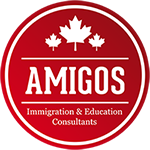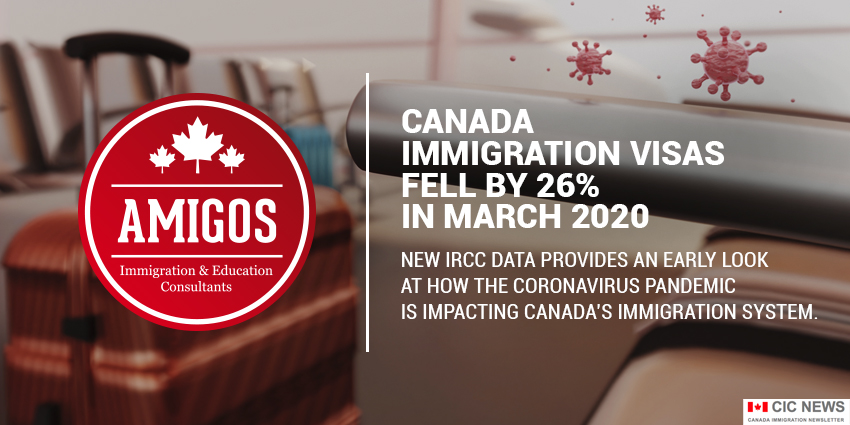New IRCC data provides an early look at how the coronavirus pandemic is impacting Canada’s immigration system.
Permanent resident (PR) visas issued by the Canadian government fell by 26 per cent in March 2020 compared with the previous month.
This new data released by Immigration, Refugees and Citizenship Canada (IRCC) shows the immediate impact that the coronavirus pandemic has had on Canada’s immigration system.
While Canada’s provinces and territories and federal government employees did not begin to go into lockdown until the second half of March, this two-week disruption was enough to contribute to a steep decline in new PR visas issued.
Last year, Canada’s PR intake increased by 33 per cent in March 2019 compared with February 2019.
March changes by province
Nearly every province saw their immigration levels fall by 30 per cent between February and March 2020. The two major exceptions were New Brunswick (0 per cent change) and Alberta (an 8 per cent decline).
Economic class immigration suffered across the board. Family reunification and refugee class immigration fluctuated by province, seeing some losses but also some gains.
Alberta saw the smallest change in immigration across the board, with a 9 per cent loss of new economic class immigrants, an 8 per cent loss in family class, and a 5 per cent loss in refugee class immigration.
New Brunswick only saw a loss in its economic class immigration of 9 per cent. The family and refugee classes saw 40 per cent and 43 per cent gains, respectively.
The largest gain in family class immigration for March was felt in Newfoundland and Labrador, which saw a 67 per cent increase over February. There was no change in refugee class immigration, however, the province saw a 53 per cent loss in economic class immigration, the biggest hit in Canada.
The largest gain in the refugee class was seen in Saskatchewan at 67 per cent. The province lost 35 per cent of economic class immigration and 36 per cent of family class immigration.
Why PR numbers should increase later in 2020
Despite its coronavirus special measures, Canada is continuing to process new applications for permanent and temporary residence.
IRCC is still holding Express Entry draws. Even after travel restrictions were implemented at the Canadian border, there have been more Invitations to Apply (ITAs) for PR issued to Express Entry candidates so far in 2020 than there were at the same time last year.
In addition, the Provincial Nominee Program (PNP) remains in operations with Nova Scotia, Ontario, Manitoba, Saskatchewan, Alberta, and British Columbia all holding PNP draws since March.
Family class immigration has been the least affected by the restrictions. Family members of Canadian citizens and permanent residents may come to Canada for essential reasons.
Refugee class immigration has been most impacted as the United Nations High Commissioner for Refugees (UNHCR) has stopped resettlement amid the pandemic.
Following the recent disruptions, there are reasons to believe Canada’s immigration system will begin to stabilize.
Canada’s immigration minister Marco Mendicino has said that the federal government remains committed to welcoming newcomers to support the country’s economy.
Canada has increased its Express Entry ITAs since the start of the pandemic. In April, Canada issued ITAs to 11,700 Express Entry candidates compared with about 8,000 per month prior to the pandemic.
Hence, Canada should see some recovery in PR levels in the second half of the year due to more Express Entry ITAs being issued, family reunification continuing, as federal government processing normalizes, and as lockdowns and travel restrictions ease in Canada and around the world.
© 2020 AMIGOS. All Rights Reserved
Si piensas que puedes necesitar nuestros Servicios, no dudes en contáctarnos. En nuestra pá gina de contacto puedes rellenar nuestro formulario para mayor información.
.
La noticia original la podrás encontrar en:
.
.








